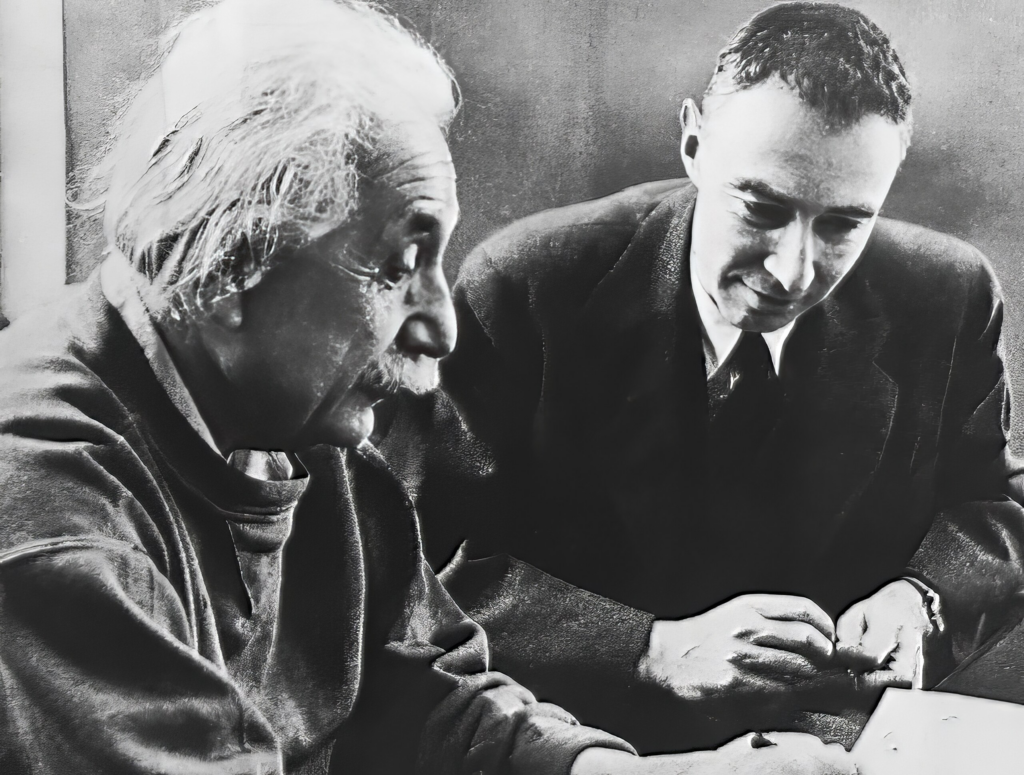INSIGHTS
Chemistry at the Crossroads of History: The Life and Work of J. Robert Oppenheimer
INSIGHTS
Chemistry at the Crossroads of
History: The Life and Work of
J. Robert Oppenheimer
.
History: The Life and Work of
J. Robert Oppenheimer
Insights > The Life and Work of J. Robert Oppenheimer
Insights Overview
Industry
Chemical Sciences and Nuclear Physics
Challenge
Developing an unprecedented technology using intricate chemical processes to harness the power of nuclear fission during World War II.
Solution
Through rigorous research, experimentation, and collaborative efforts, Oppenheimer and his team developed complex isotopic separations and precise triggering mechanisms, leading to the creation of the world’s first atomic bombs.
Outcome
The successful development and use of atomic bombs hastened the end of World War II and marked a revolutionary milestone in chemical sciences, fostering a new era of nuclear technology and atomic energy.
Summary
J. Robert Oppenheimer was a pivotal figure in 20th century physics, and in the arc of human civilization. Known as the “Father of the Atomic Bomb,” Oppenheimer’s monumental work and leadership in theoretical physics led to the development of the world’s first nuclear weapons as a product of the Manhattan Project. His work was underpinned by a deep understanding of chemistry, making use of isotopic separation, nuclear fission, and plutonium metallurgy. Despite the ethical controversies surrounding his work, Oppenheimer’s contributions remain an integral part of the foundational knowledge in modern chemistry. Through his story, we gain insights into the profound influence chemistry has on society and the power it holds to shape our world for better and for worse.

Background
Born in 1904, J. Robert Oppenheimer was a child prodigy who had an early affinity for the natural sciences. He graduated from Harvard in just three years and later went to study at the University of Cambridge and the University of Göttingen, where he earned his PhD in theoretical physics.
After receiving his PhD, Oppenheimer returned to the United States to begin an illustrious academic career. He held professorships at both the University of California, Berkeley, and the California Institute of Technology. As a professor, in addition to his own genius in theoretical physics, he also quickly became renowned for his brilliant teaching, inspiring a new generation of scientists and identifying himself as an expert leader and communicator.
During the 1930s, Oppenheimer conducted significant research in theoretical physics. His work spanned many areas including the theory of electrons and positrons, quantum field theory, and the quantum theory of the electromagnetic field. And while studying the physics of the incomprehensibly small, he also made essential contributions to the understanding of cosmic rays, neutron stars, and black holes.
While Oppenheimer initially had no experience in experimental physics or nuclear chemistry, the advent of World War II shifted his focus. In 1941, he was invited to join the secret Manhattan Project. Despite his lack of practical experience, Oppenheimer’s exceptional command over theoretical principles and his ability to synthesize ideas from different disciplines made him an ideal candidate for this unprecedented mission.
In 1942, Oppenheimer was appointed to lead the secret Manhattan Project at Los Alamos Laboratory. The project’s aim was to harness the power of nuclear fission, a process involving the splitting of atomic nuclei that could release vast amounts of energy. The team used Uranium-235 and Plutonium-239 as their primary materials, both of which required intricate chemical processes for their extraction and purification.
Oppenheimer’s role involved directing a diverse team of chemists, physicists, and engineers towards a shared goal – creating the world’s first atomic bomb. Amid the stringent wartime secrecy, they focused their efforts on developing two types of nuclear weapons: a gun-type design using Uranium-235 and an implosion-type weapon using Plutonium-239. It was during these years that Oppenheimer’s in-depth understanding of the chemical principles and processes became crucial to the project’s success.
The first successful test of these weapons, codenamed “Trinity,” took place on July 16, 1945. Subsequently, these atomic bombs were dropped on Hiroshima and Nagasaki, causing unprecedented destruction and effectively ending World War II.
I am become death, the destroyer of worlds.”
J. Robert Oppenheimer
Evaluation
The work carried out by Oppenheimer and his team at Los Alamos during the Manhattan Project required a profound understanding of both physics and chemistry, underpinned by a rigorous scientific methodology. It was one of the largest and most complicated scientific undertakings in human history, involving numerous research and development challenges.
The Manhattan Project’s two paths – Uranium-235 and Plutonium-239 – necessitated distinct methods of isotopic separation. Uranium-235 was separated from the more abundant Uranium-238 using gaseous diffusion and electromagnetic separation, both complex chemical processes. Meanwhile, Plutonium-239 was produced in nuclear reactors by neutron irradiation of Uranium-238, followed by a series of chemical processes to separate and purify the Plutonium.
The team also faced the challenge of developing a method to trigger a rapid, uncontrolled chain reaction – nuclear fission – in the weapons. They used chemical explosives to initiate this reaction. For the gun-type design, an explosive was used to shoot a sub-critical piece of uranium into another sub-critical mass to achieve a supercritical mass. In the implosion-type design, chemical explosives were used to compress a sub-critical sphere of plutonium into a smaller, denser form, achieving supercriticality.
The scientific achievements of the Manhattan Project were monumental, but they also gave rise to ethical and moral debates that continue to this day. The first debate revolves around whether the bomb should have been created in the first place. Critics argue that pursuing such a devastating technology set a dangerous precedent and ignited a global arms race. Supporters, on the other hand, contend that the project was an essential response to intelligence suggesting that Nazi Germany was developing its own atomic bomb.
A second debate focuses on whether the atomic bombs should have been used once created. The bombings of Hiroshima and Nagasaki resulted in the deaths of an estimated 200,000 people, many of them civilians. Critics argue that these bombings constituted an inhumane act of warfare. Supporters, however, maintain that using the bombs ultimately saved lives by hastening the end of the war and avoiding a planned invasion of Japan that would have led to even greater casualties.
In the midst of these debates, Oppenheimer himself expressed regret. He famously quoted from the Bhagavad Gita, saying, “Now I am become Death, the destroyer of worlds,” reflecting on the devastating power his scientific work had unleashed. Despite the controversy, it is undeniable that the Manhattan Project, under Oppenheimer’s leadership, illustrated the immense potential and ethical complexity of the chemical sciences. This serves as a stark reminder of the need for ethical considerations in scientific advancements.

Conclusion
J. Robert Oppenheimer’s life and work epitomize the transformative potential of chemistry. Despite the ethical questions raised by the Manhattan Project, it fundamentally altered the course of history and led to an exponential leap in our understanding of atomic science. Today, as we contemplate his contributions, we recognize the power and responsibility that come with advancements in chemical sciences, informing our own commitment to use this knowledge for the benefit of humanity.
Work with Us
Begin your partnership with Noah Chemicals and our expertise
to work at solving your most complex challenges.